Speak
Intelligent Experiences in the Workplace: Longterm Engagement at Adidas
[In Collaboration with: Jean Tschanz Egger, Riccardo Sala + Samuele Brenna]Role: Researcher, UX Design, User Testing
Duration: 1.5 months

Abstract
In the contemporary workplace landscape, even with the introduction of engaging onboarding experiences and attractive perks, many companies face an ongoing challenge: sustaining long-term employee satisfaction and commitment. Despite the initial allure of these initiatives, employees often grapple with burnout and dissatisfaction, significantly impacting productivity and overall morale. Addressing these challenges necessitates a comprehensive exploration of the root causes behind employee disengagement and unhappiness.


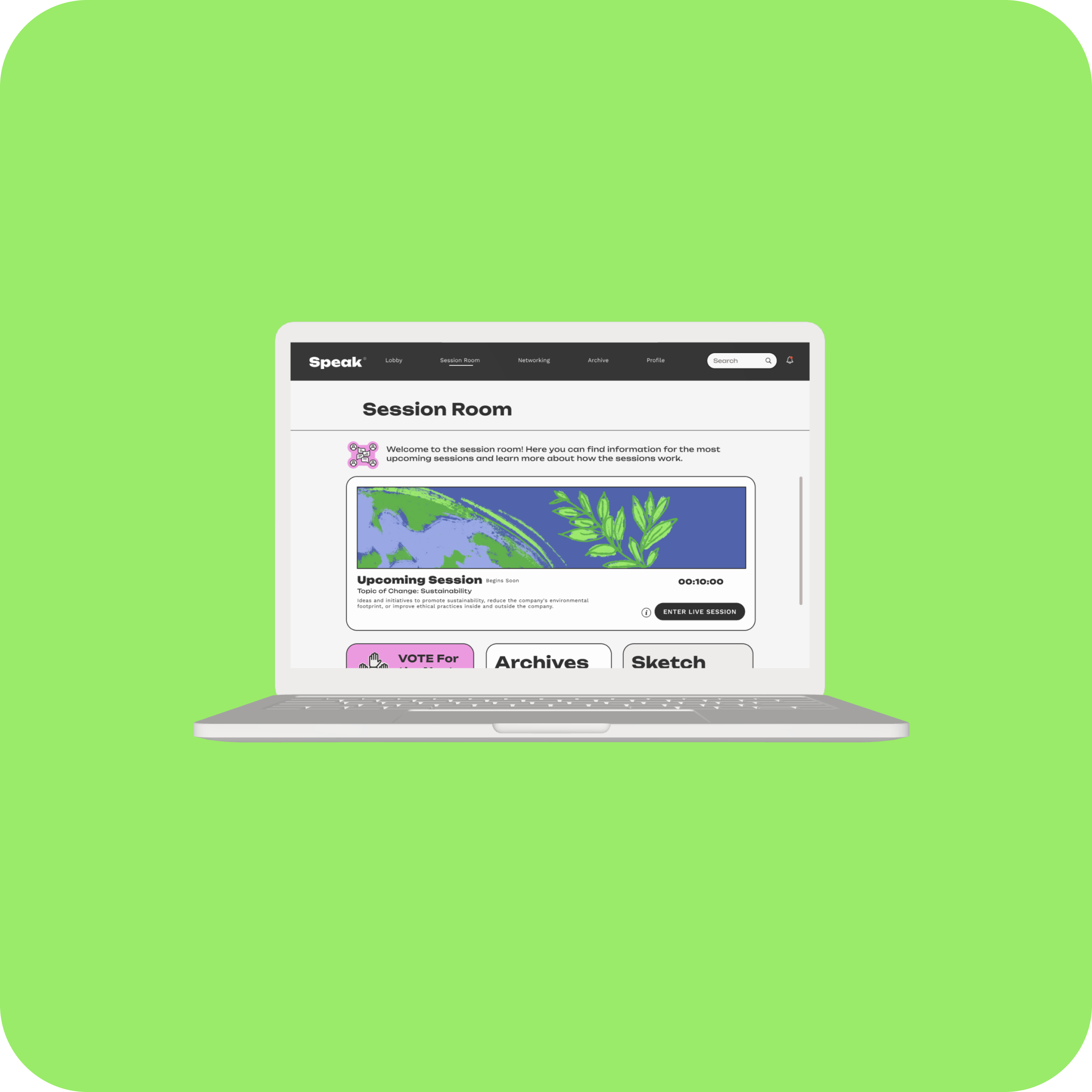

The Challenge
As part of our project scope, Adidas assigned us with the critical task of investigating the root causes of employee turnover and devising strategies to improve long-term retention. More specifically, we were given the following questions to answer:
“How can we design a future intelligent experience allowing employees to remain engaged, motivated and committed while running their daily tasks?“
“How could this experience promote knowledge sharing across different departments generating value for the company as a whole?”
Research
Learning Objectives
To effectively tackle the challenge, we established the following learning objectives to guide our research and design process. These objectives helped us focus our efforts and streamline our scope: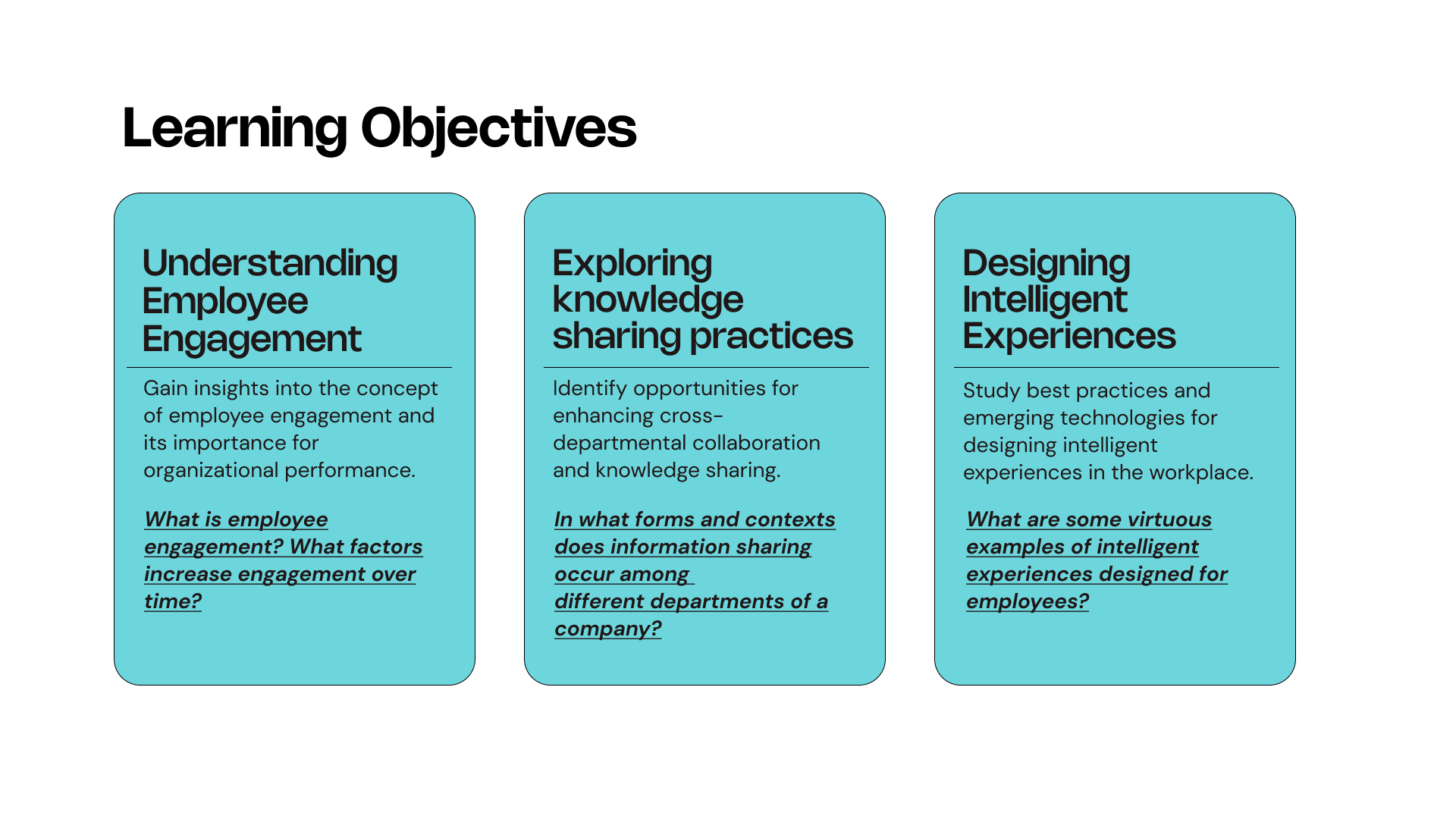
Structuring the Research Plan: Methodology
We continued to structure our research plan by establishing mandatory and nice-to-have criteria for recruiting our interview participants. We aimed to gather a diverse range of perspectives by including employees at different stages of their careers and from various generational cohorts. Specifically, we sought to interview:- Employees entering, existing, and exiting the workplace (years of experience)
- A mix of Millennials and Gen Z employees
We also created an interview plan and script. Our interviews were held by myself and a colleague. I interviewed the user while my colleague recorded important answers. All interviews were also audio recorded with the permission of our interviewees. After each interview we debriefed and revised the questions as needed.

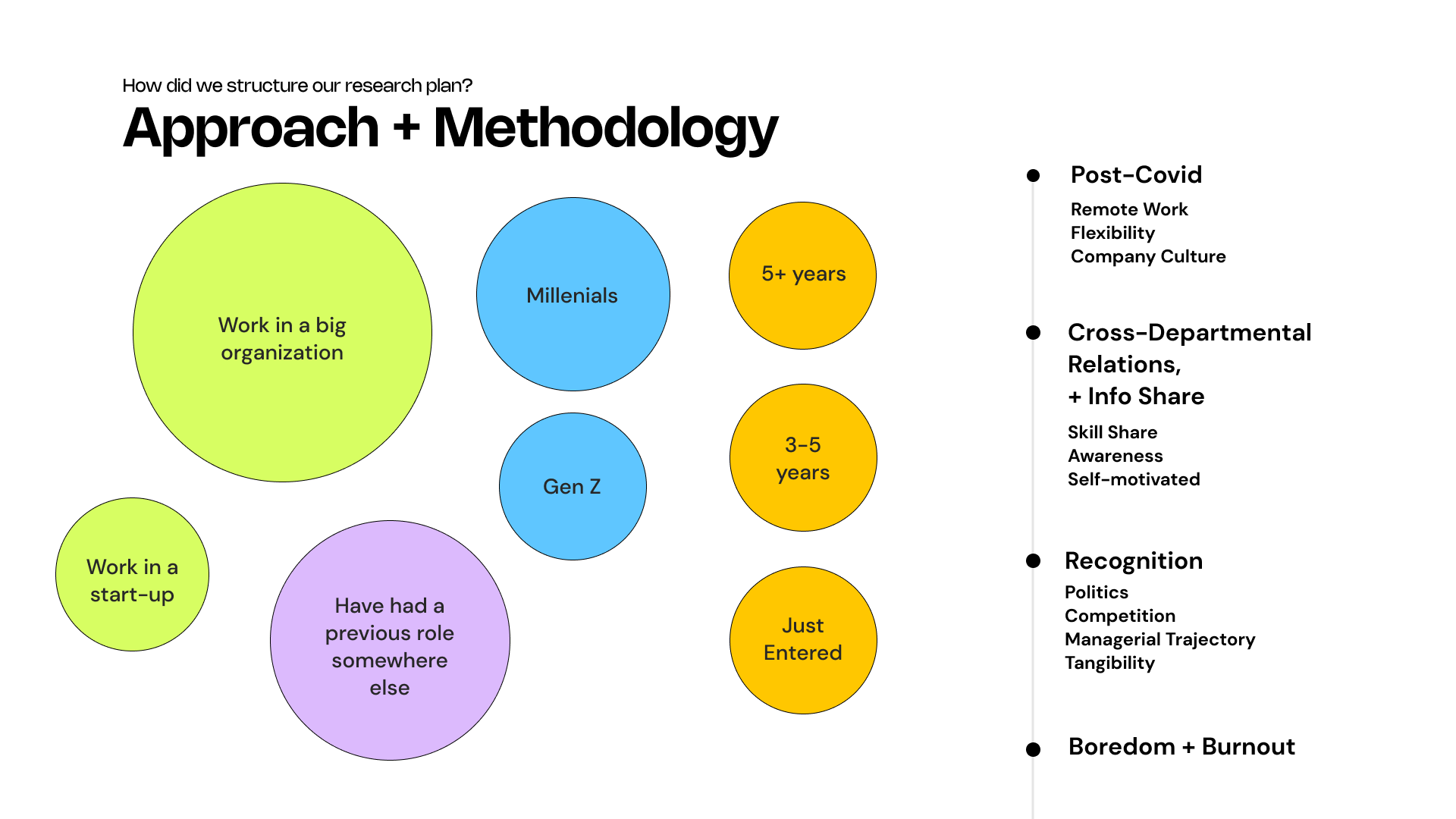
In our interviews we mostly came across those working at big organizations. The most prevalent topics that came up included:
- Post covid including the status of remote work, flexibility and company culture
- Cross-Departmental Relations + Info Share
- Recognition including politics, competitions, managerial trajectory and tangibility; and
- Boredom + Burnout
Insights + Opportunities
From the research, two key insights and opportunities were developed which informed the problem definition.
The Archetypes
In order to better categorize and understand our insights, we created archetypes.The archetypes included “The Newcomer” employee; This is somebody who has just entered the workforce, excited to prove themselves and take on the world and don’t want to feel like a number.
“The Been Around the Block” refers to an intermediate position who has masted their craft and craves more community.
Lastly, “The I Live Here Now” is an employee that displays leadership skills, has worked in the industry for quite a while and typically fits a managerial role. This particular person usually doesn’t have much more room for growth and can often feel bored and unfulfilled.

Interestingly enough, within all these roles we discovered a common trait that we’d like to distinguish as “The Moaner”.
Now what is “The Moaner” you ask? The Moaner makes it’s presence known in different ways—often first with suggestions during meetings, when these aren’t heard, it may complain during coffee breaks, with other co-workers, or at the water cooler, over time it may manifest itself in eye rolls and long sighs, before manifesting into it’s final form: disengagement.

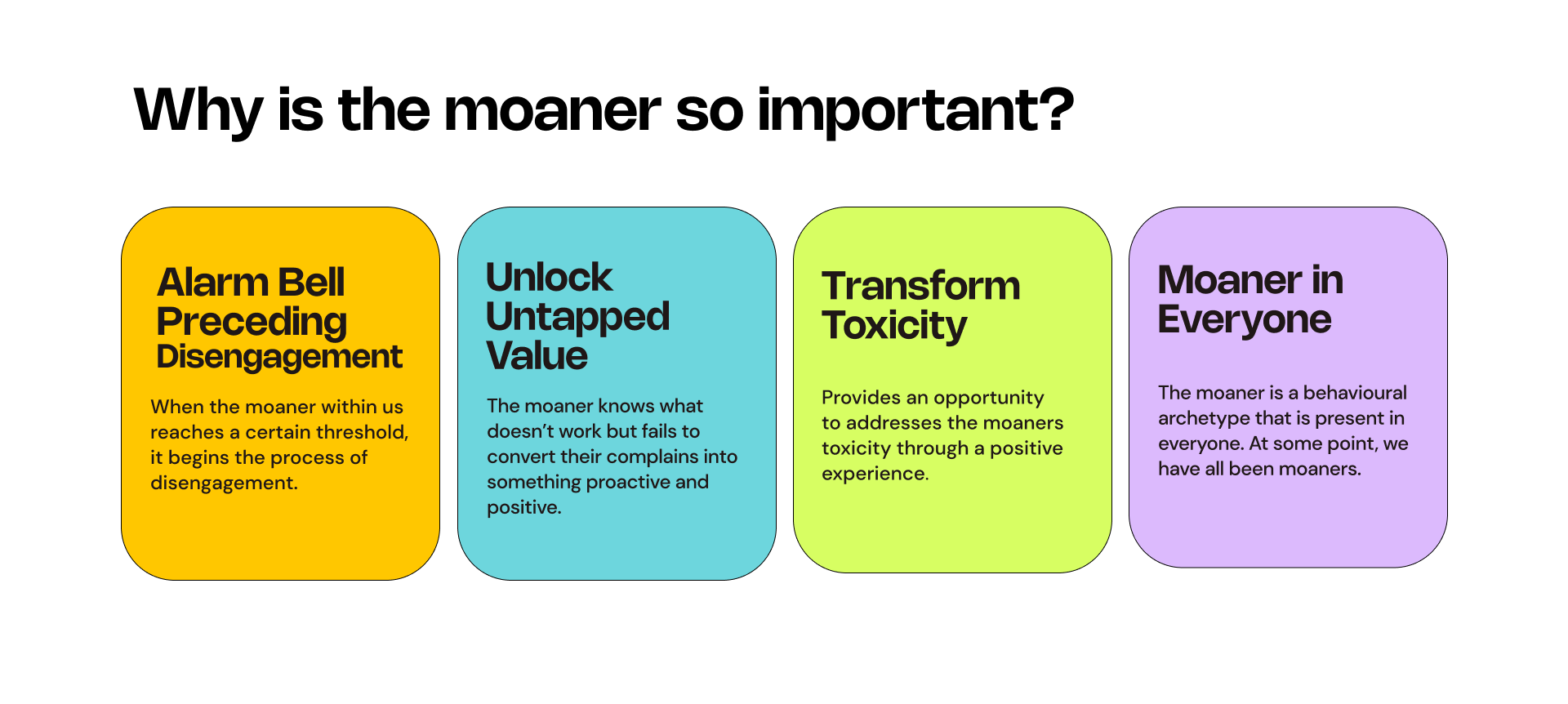
Define
With this additional insight of the moaner... the new question to be asked became:
“How do we free the moaner!!?”

The Idea
Speak is a service that enables a decentralized and community-based feedback cycle, where employees can collaborate, learn, and envision improved scenarios for their workplaces.Speak is for progressive middle managers who want to experiment with a new form of engagement and decentralized feedback cycle within their team and for employees who want to collaborate, learn, and envision improved scenarios for their workplaces.
We essentailly wanted to take the need for agency and updated appreciation frameworks and give these people a space to moan, thus providing employees with a sense of voice, community and a way in which they can improve their place of work, thus avoiding disengagement.
User Journeys
To better understand each of the archetypes, their moaning phases and how the service would affect them, we created a user journey for each archetype.The Newcomer

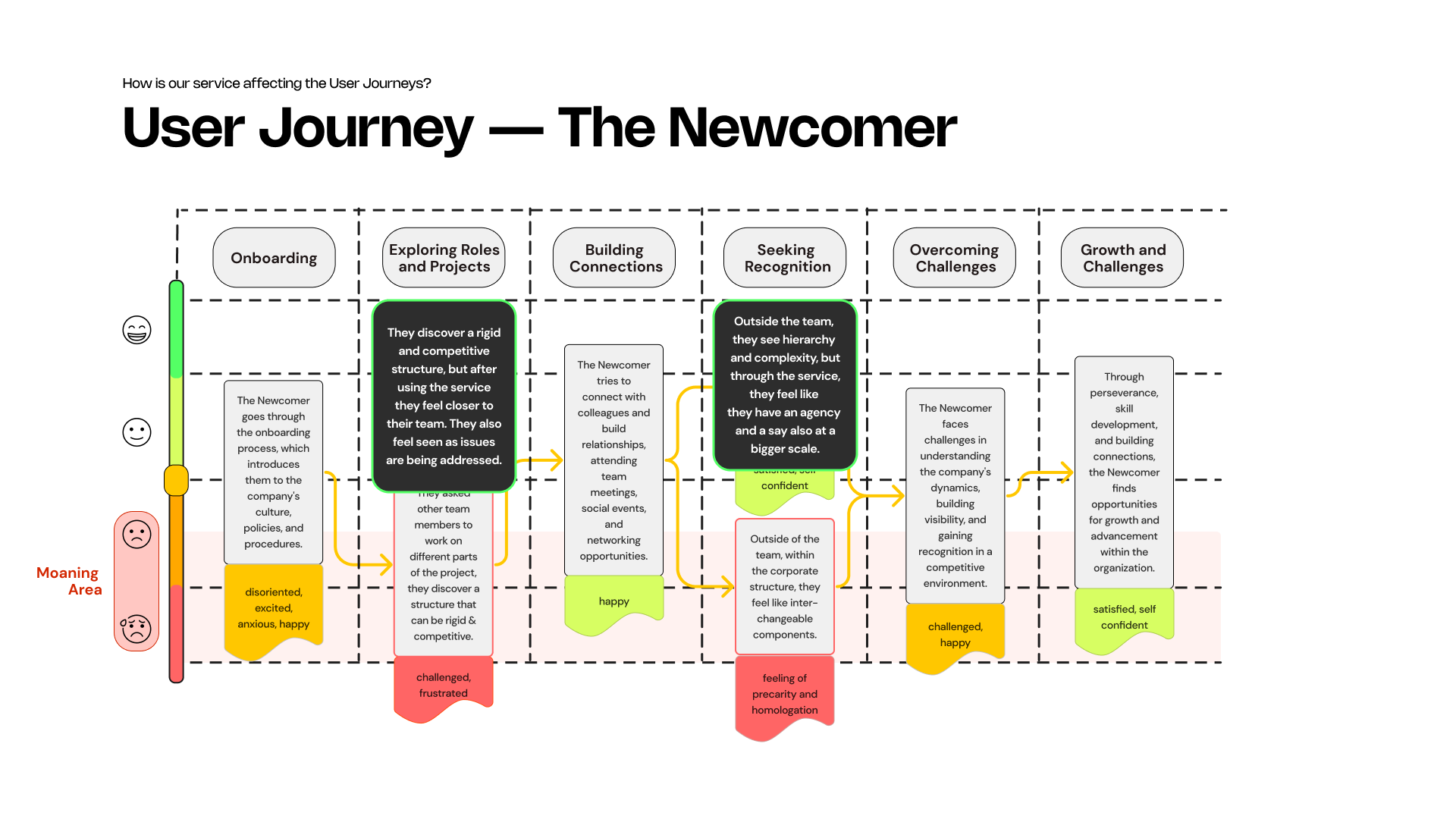
The Been Around the Block


The I Live Here Now

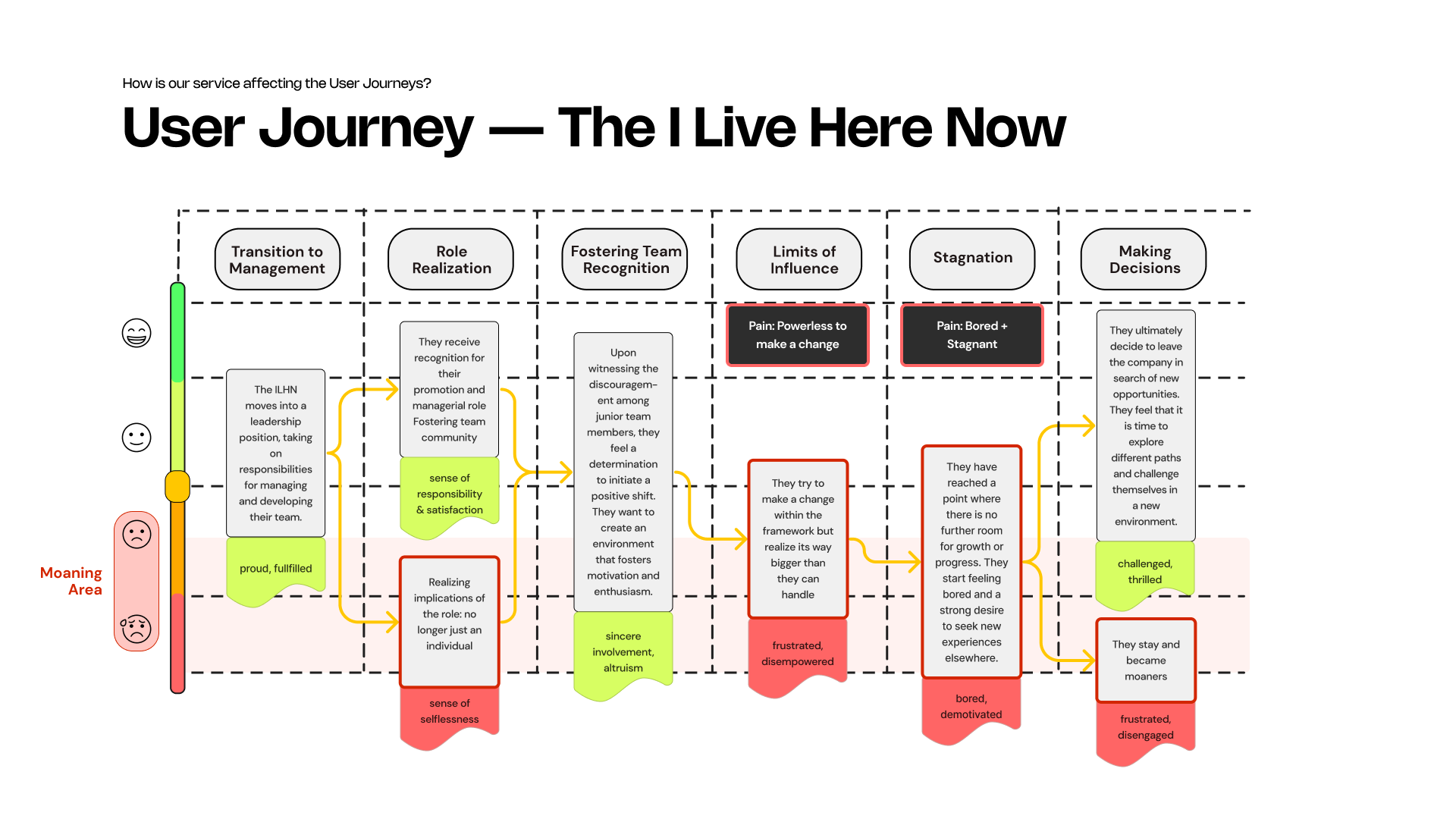
Service Blueprint + Information Architecture

So... How does it work?
The online service is made up of two main experiences coordinated by a dedicated desktop and followed by the production of a report.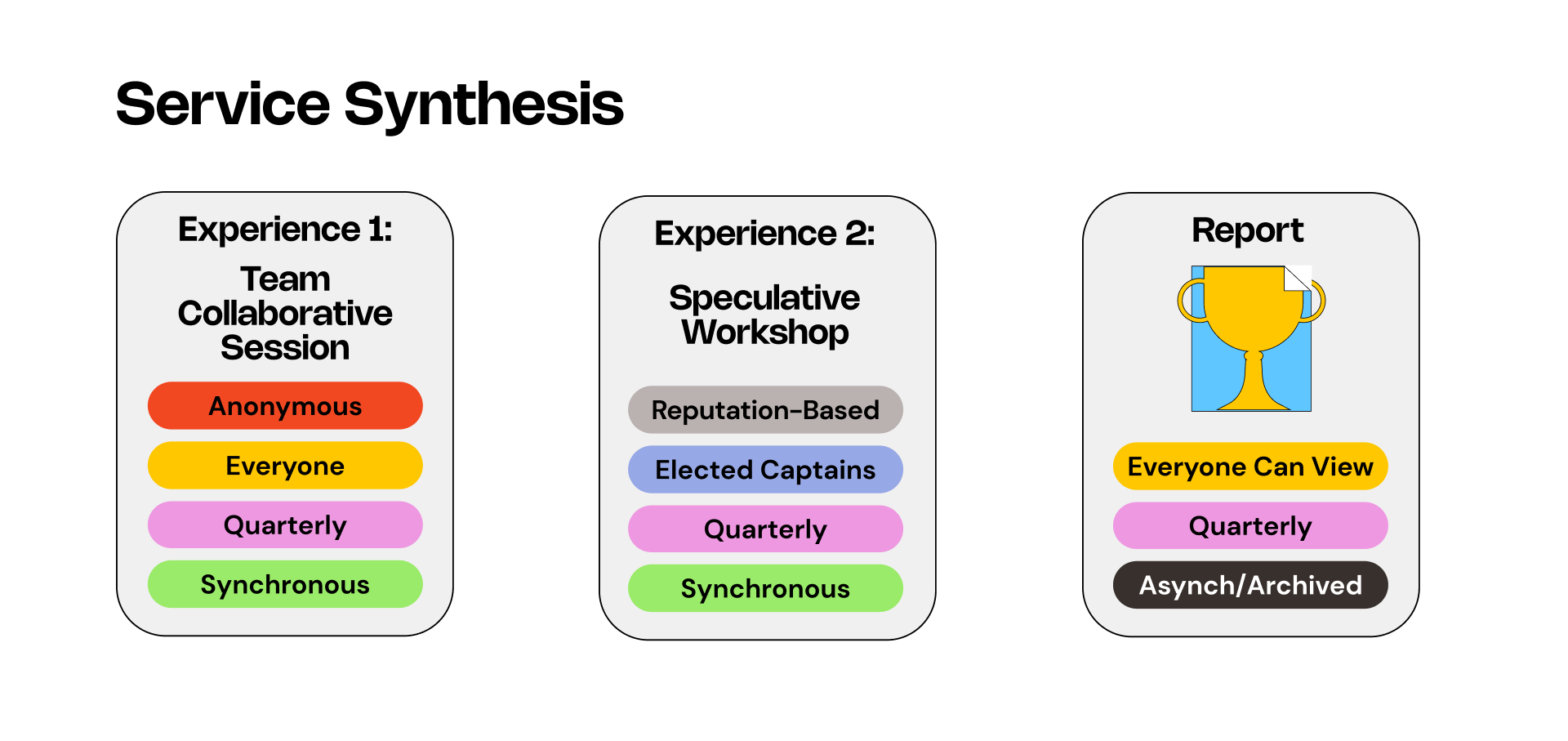
Experience 1: Team Collaborative Session
In the Experience 1 every team use the platform in the same moment to define problems and challenges. They can:- Input topics
- Cluster topics
- Rank topics
- Vote a Captain

Experience 2: Inter-Departmental Speculative Workshops
The elected Captain will go to the Experience 2 to further the conversation around the most relevant topics. They would use the platform and a special conceptual map to:
- Speculate
- Ideate together
- Actionable solutions
- Generate a report
Part 3: Report Generation
The report will then be accessible to everyone within the company and will become part of an archive. This report is meant to be temperature check or speculation for the entire company.
The process is not top-down, no longer bottom-up, it is DECENTRALIZED.
The Focus
For the first phase of this project, we focused on Experience 1: Team Collaborative Session. We developed a storyboarding exercise to better explain how the collaborative team session works. You can check it out here.



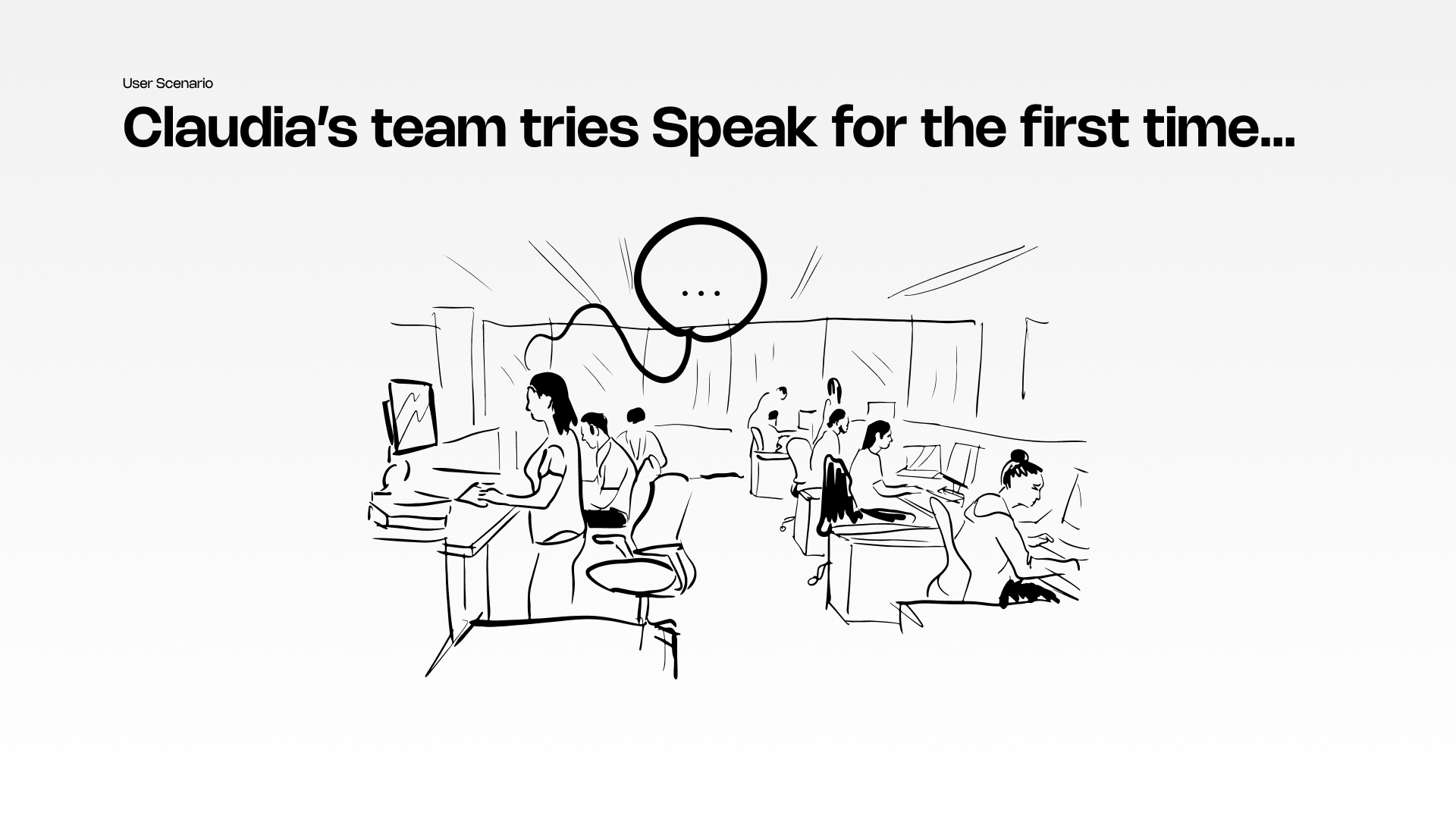





Check out the Mock-Up ︎︎︎
User Testing
The team interviewed 6 users for a total of 6 hours. A combination of paper prototypes, digital prototypes and concept testing was used to achieve our results. The results were as follows:

Next Steps
- Beyond nominating team captains, the framework would be expanded to include a guild to help the team captain tackle the chosen topic.

- To better identify skill share and captain nominations, profiles will be created with preferences, skills and past sessions history.
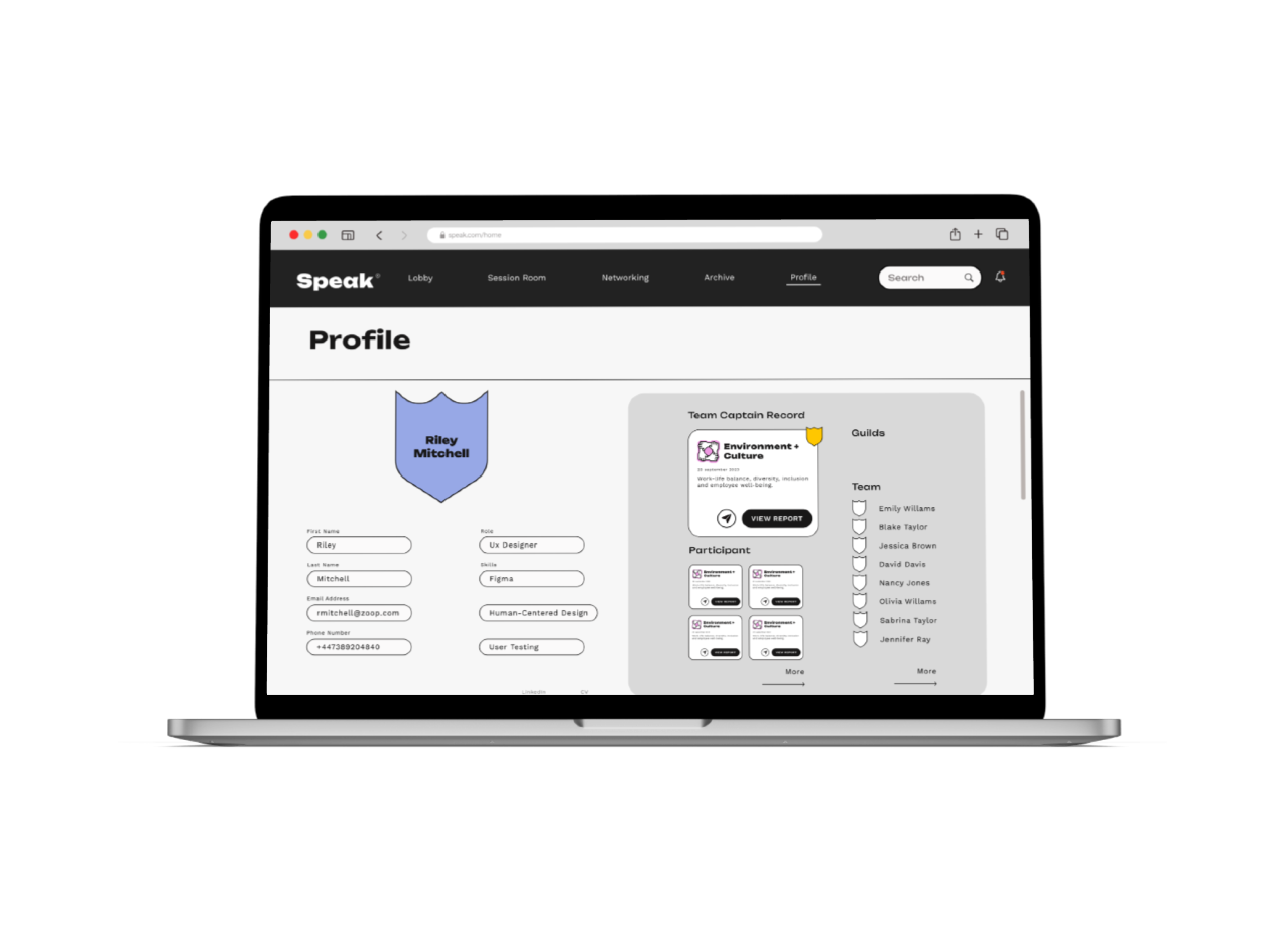
- More Testing within a “real” environment to gather feedback on the whole process
